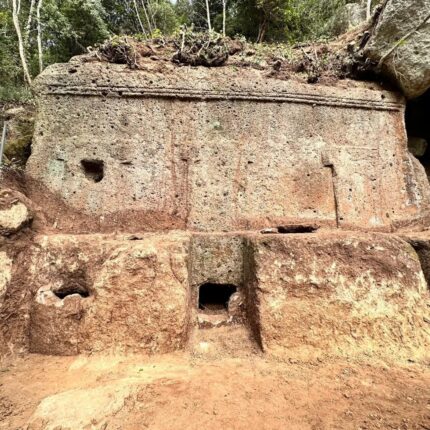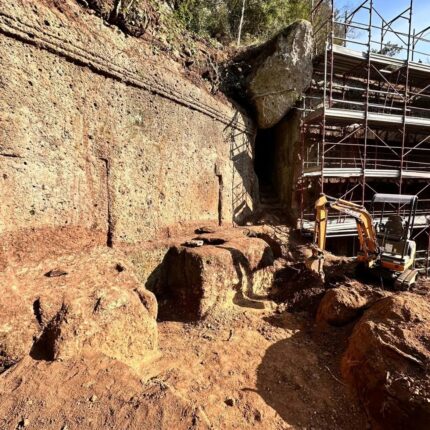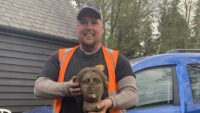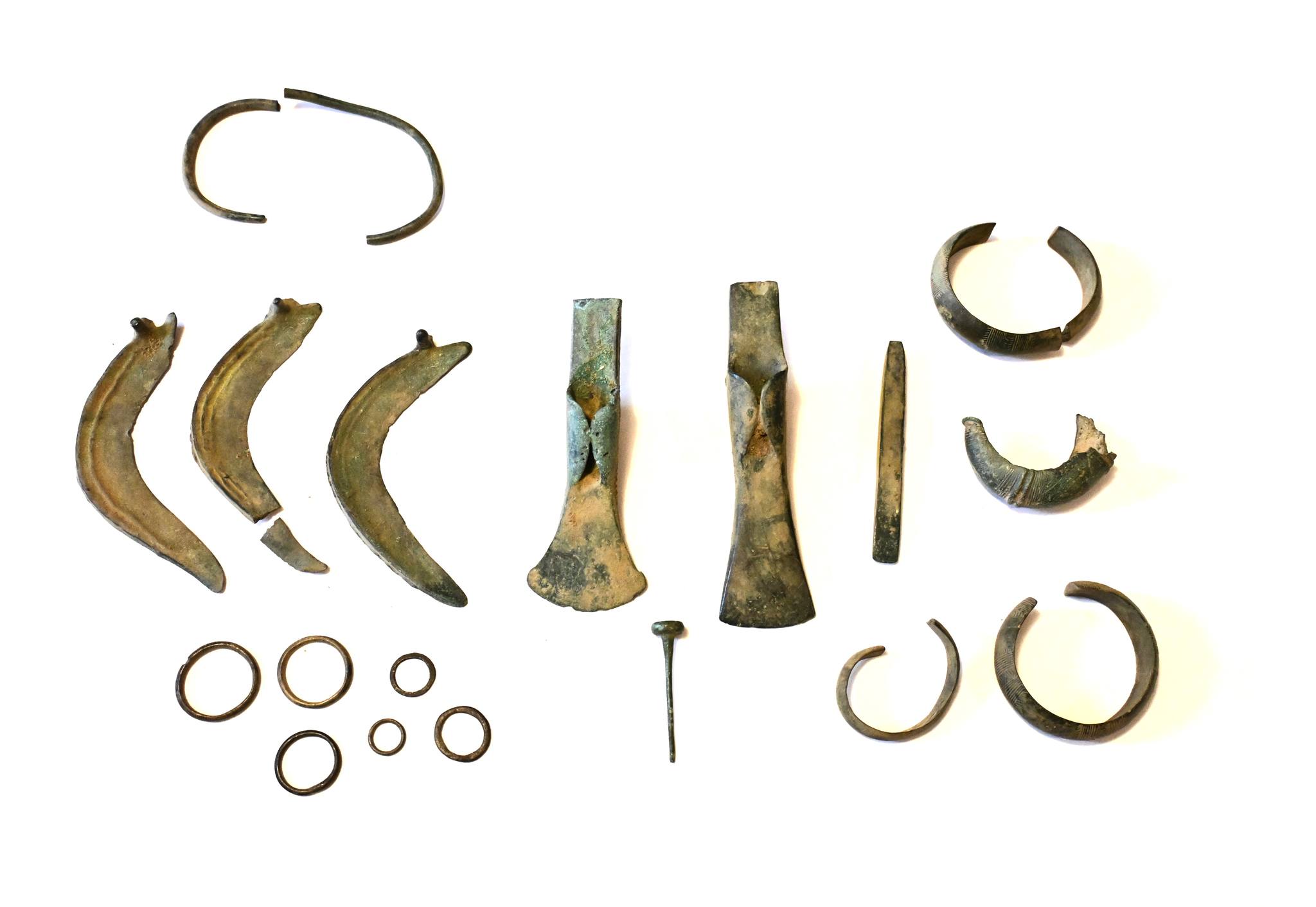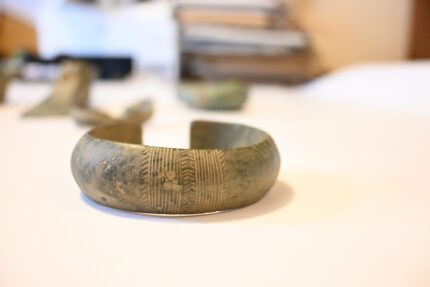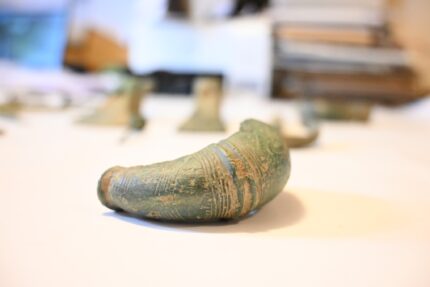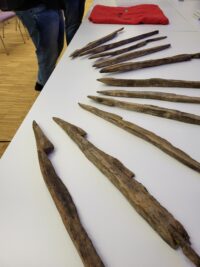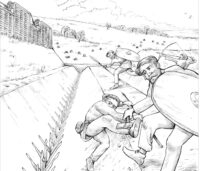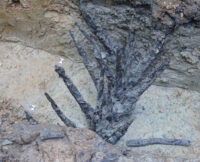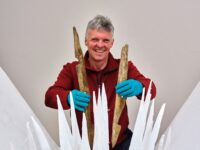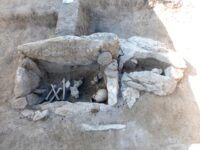 An archaeological excavation of a Neolithic site on the outskirts of Clermont-Ferrand in central France uncovered about 50 burials and the remains of hundreds of structures from 4,000 years of occupation. Forty-one bone samples from animal remains and burials have been radiocarbon dated and they cover almost the entire range of the Neolithic period, making this site unusually dense with information about the artifacts, dwellings and funerary practices of people in Stone Age Auvergne.
An archaeological excavation of a Neolithic site on the outskirts of Clermont-Ferrand in central France uncovered about 50 burials and the remains of hundreds of structures from 4,000 years of occupation. Forty-one bone samples from animal remains and burials have been radiocarbon dated and they cover almost the entire range of the Neolithic period, making this site unusually dense with information about the artifacts, dwellings and funerary practices of people in Stone Age Auvergne.
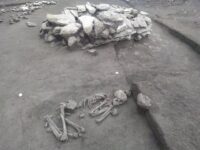 The site was first identified during construction of the A75 highway in the 1980s, and archaeologists returned to excavate it further in 2019-2020 as part of a project to widen the A75. Archaeologists from France’s National Institute of Preventative Archaeology (INRAP) found the earliest Neolithic occupation of the site, attested to by ceramics, hearths and pits dated from 4750-4500 B.C., was transitory. In the second half of the 5th millennium, the temporary habitats disappeared. Only tombs from this period have been found at the site, indicating the settlement was abandoned to funerary use only.
The site was first identified during construction of the A75 highway in the 1980s, and archaeologists returned to excavate it further in 2019-2020 as part of a project to widen the A75. Archaeologists from France’s National Institute of Preventative Archaeology (INRAP) found the earliest Neolithic occupation of the site, attested to by ceramics, hearths and pits dated from 4750-4500 B.C., was transitory. In the second half of the 5th millennium, the temporary habitats disappeared. Only tombs from this period have been found at the site, indicating the settlement was abandoned to funerary use only.
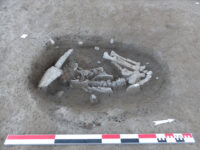 The burials from this period include a wide variety of funerary practices and tomb architecture. Tombs range in type from crouch burials in simple pit graves without furnishings to complex dry stone structures covered with mounds that housed the remains of several individuals. Several significant cist burials — chambers with vertical slab walls topped by massive stone slabs — were found with ceramic grave goods. Some of the stone funerary architecture is very subtle, like one large stone placed on its edge at the head of a grave.
The burials from this period include a wide variety of funerary practices and tomb architecture. Tombs range in type from crouch burials in simple pit graves without furnishings to complex dry stone structures covered with mounds that housed the remains of several individuals. Several significant cist burials — chambers with vertical slab walls topped by massive stone slabs — were found with ceramic grave goods. Some of the stone funerary architecture is very subtle, like one large stone placed on its edge at the head of a grave.
Another burial (5413), dated between 4337 and 4065 BC. BC, shows more imposing stone architecture. Its location is marked by a slab of peperite which was collected more than a kilometer away (at the nearest). This heavy, wide and thick slab rests on two smaller slabs laid on edge. Below was an individual without funerary goods and in the same position as his contemporaries.
Other tombs are characterized by the presence of large slabs laid horizontally. After removal of this covering, one of the burials (5130), dated between 4344 and 4061 BC. AD shows slabs laid on edge which outline a main chest and a secondary one, each having yielded an immature individual, without associated furniture. This type of architecture in a box covered with a slab finds comparisons in the “Chamblandes cists” mainly attested to the south of Lake Geneva and in Valais at the same time.
This stone funerary architecture finds its climax in a burial (5201), containing three individuals, one of which was dated between 4344 and 4061 BC. BC, is strictly in the same chronological horizon as the rest of the necropolis, despite a very different conception.
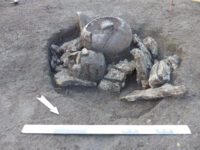 The domestic structures return in the first half of the 4th millennium and come the second half of the millennium, cremation burials appear as well as inhumation burials. The oldest cremation burial combines stone cist with ceramic cinerary urn. Burial 5280 consists of a cist of sideways limestone slabs containing two round urns and two smaller pots flipped upside-down.
The domestic structures return in the first half of the 4th millennium and come the second half of the millennium, cremation burials appear as well as inhumation burials. The oldest cremation burial combines stone cist with ceramic cinerary urn. Burial 5280 consists of a cist of sideways limestone slabs containing two round urns and two smaller pots flipped upside-down.
The largest funeral urn is a spherical bottle of a very particular type, decorated with two paired buttons opposite two vertical cords. These vases qualified as gynecomorphs find comparison in Switzerland in Cortaillod. This example opposing breasts and stylized arms can be described as anthropomorphic. Like another urn from this tomb, it was “sacrificed” by a pickaxe struck between the breasts.
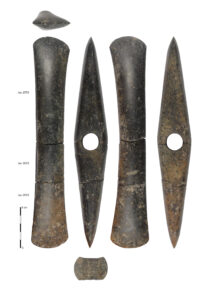 Another “sacrificed” ax was found in an enclosure that used to be a low mound. The enclosure contained no surviving human remains, but it was heavily eroded and limestone blocks arranged in a rectangle may be all that’s left of the central burial. Less than three feet away from the center of the enclosure, the INRAP team found a perforated double-headed ax broken into three parts. The quality of the workmanship is exceptionally high. Carved out of serpentine, axes of this type were made in Lake Neuchâtel in Switzerland between 3300 and 3100 B.C.
Another “sacrificed” ax was found in an enclosure that used to be a low mound. The enclosure contained no surviving human remains, but it was heavily eroded and limestone blocks arranged in a rectangle may be all that’s left of the central burial. Less than three feet away from the center of the enclosure, the INRAP team found a perforated double-headed ax broken into three parts. The quality of the workmanship is exceptionally high. Carved out of serpentine, axes of this type were made in Lake Neuchâtel in Switzerland between 3300 and 3100 B.C.
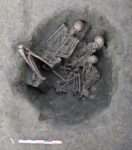
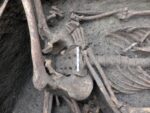 New burials and structures emerge in the beginning of the 3rd millennium albeit on a smaller scale indicating a lower population density that persisted until the Early and Middle Bronze Age. The final burials associated with the settlement date to the end of the 3rd and the beginning of the 2nd millennium. Three individuals were found in one grave placed on top of the skeletal remains of oxen quarters. Two were buried together at the same time, then the third added after some time had passed. A flint arrowhead was found in the pelvic basin of the third person. This is likely what killed him. Radiocarbon dating places the burial to between 2888 and 2632 B.C.
New burials and structures emerge in the beginning of the 3rd millennium albeit on a smaller scale indicating a lower population density that persisted until the Early and Middle Bronze Age. The final burials associated with the settlement date to the end of the 3rd and the beginning of the 2nd millennium. Three individuals were found in one grave placed on top of the skeletal remains of oxen quarters. Two were buried together at the same time, then the third added after some time had passed. A flint arrowhead was found in the pelvic basin of the third person. This is likely what killed him. Radiocarbon dating places the burial to between 2888 and 2632 B.C.
